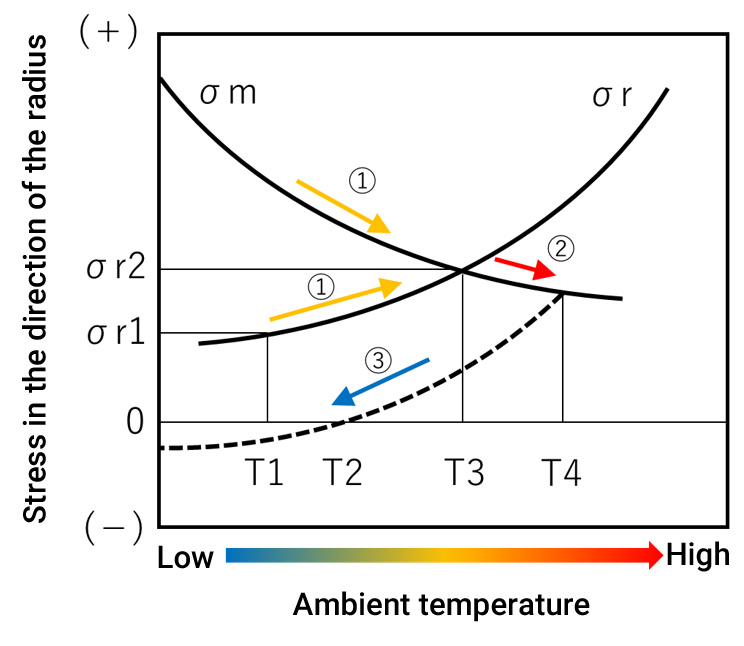This website uses cookies for a better browsing experience.
If you agree to the use of cookies, please click the "Agree" button.
Please refer to the Privacy Policy regarding the use of cookies on this site.
Stress relaxation is a phenomenon that occurs when bearings are press-fitted into housings and used in high-temperature atmospheres. Stress relaxation is explained below.
If a bearing is exposed to a high-temperature atmosphere while it is press-fitted and secured in a housing, the stress generated by interference may increase due to the difference in thermal expansion between the bearing and housing.
When the physical properties of a bearing decrease due to high temperatures along with an increase in stress, plastic strain occurs in the bearing that was fixed at a stress within the elastic strain. This phenomenon is known as stress relaxation.
Stress relaxation occurs both in plastic materials as well as in metallic materials.
Stress relaxation may cause the bearing to drop out of or rotate in the housing, so we recommend the installation of a bearing locking or anti-rotation mechanism.
A model of the occurrence of stress relaxation is shown in Figure 1.
A bushing press-fitted into a housing generates a radial stress σr1 between the bushing and housing at temperature T1 (normal temperature).
(1) As the temperature rises, the bushing thermally expands and the radial stress σr increases, but at the same time the allowable stress σm of the bearing material itself decreases.
(2) Radial stress σr increases up to temperature T3. When temperature T3 is exceeded, the material yields along the curve of decreasing allowable stress σm of the material, and radial stress σr decreases.
(3) When cooling from temperature T4 begins, the radial stress σr decreases as shown by the dotted line in Figure 1, resulting in a gap between the bushing and the housing.

Figure 1 Model of the occurrence of stress relaxation



